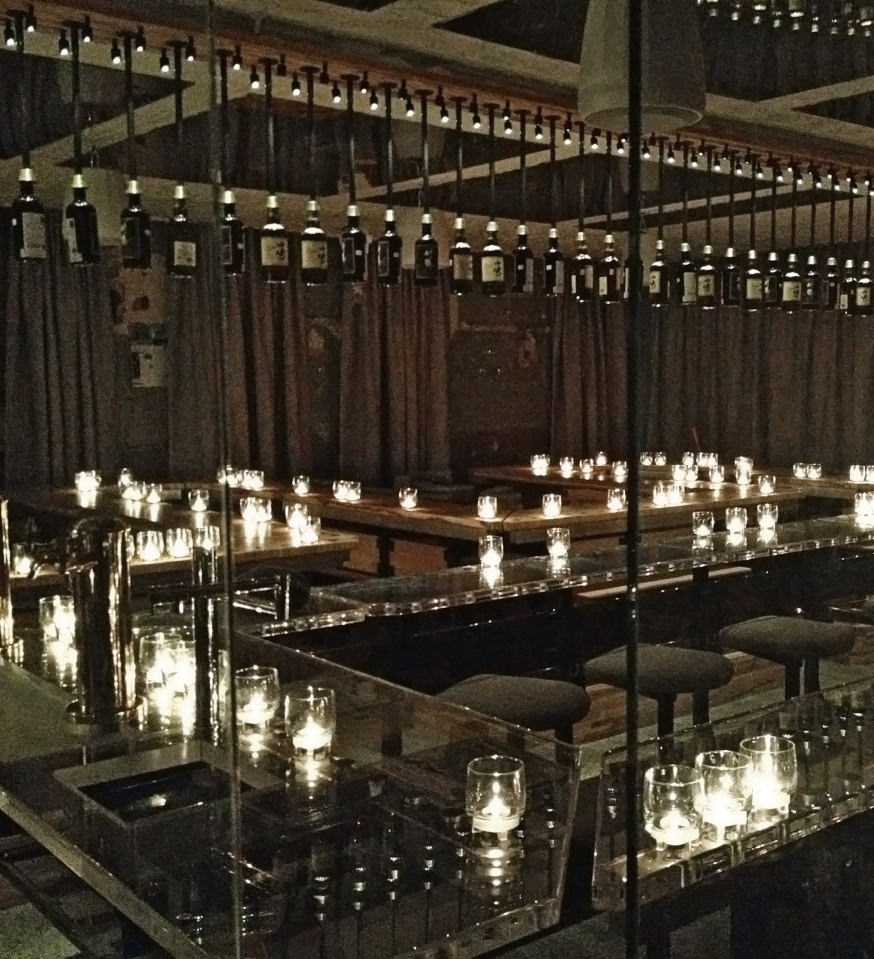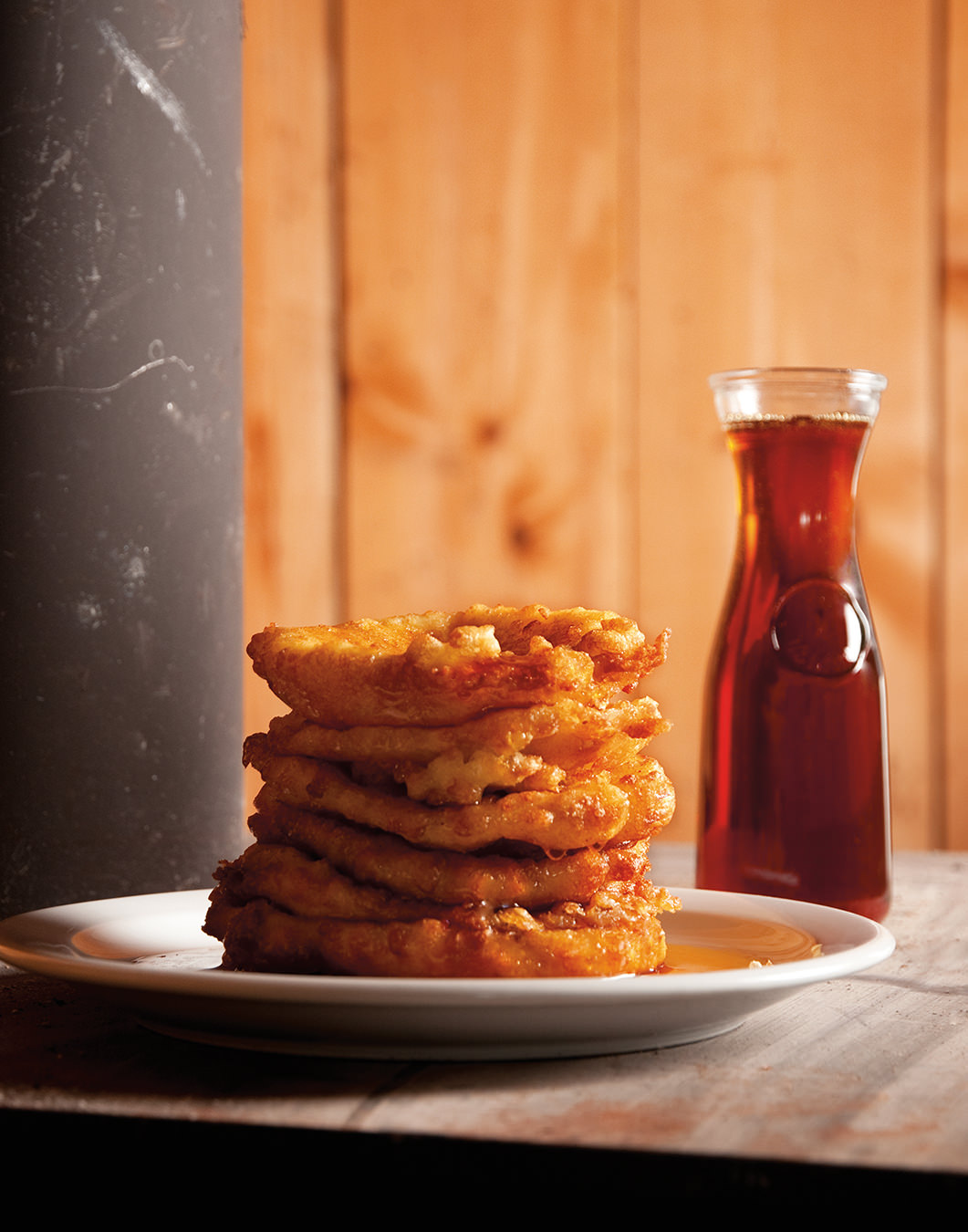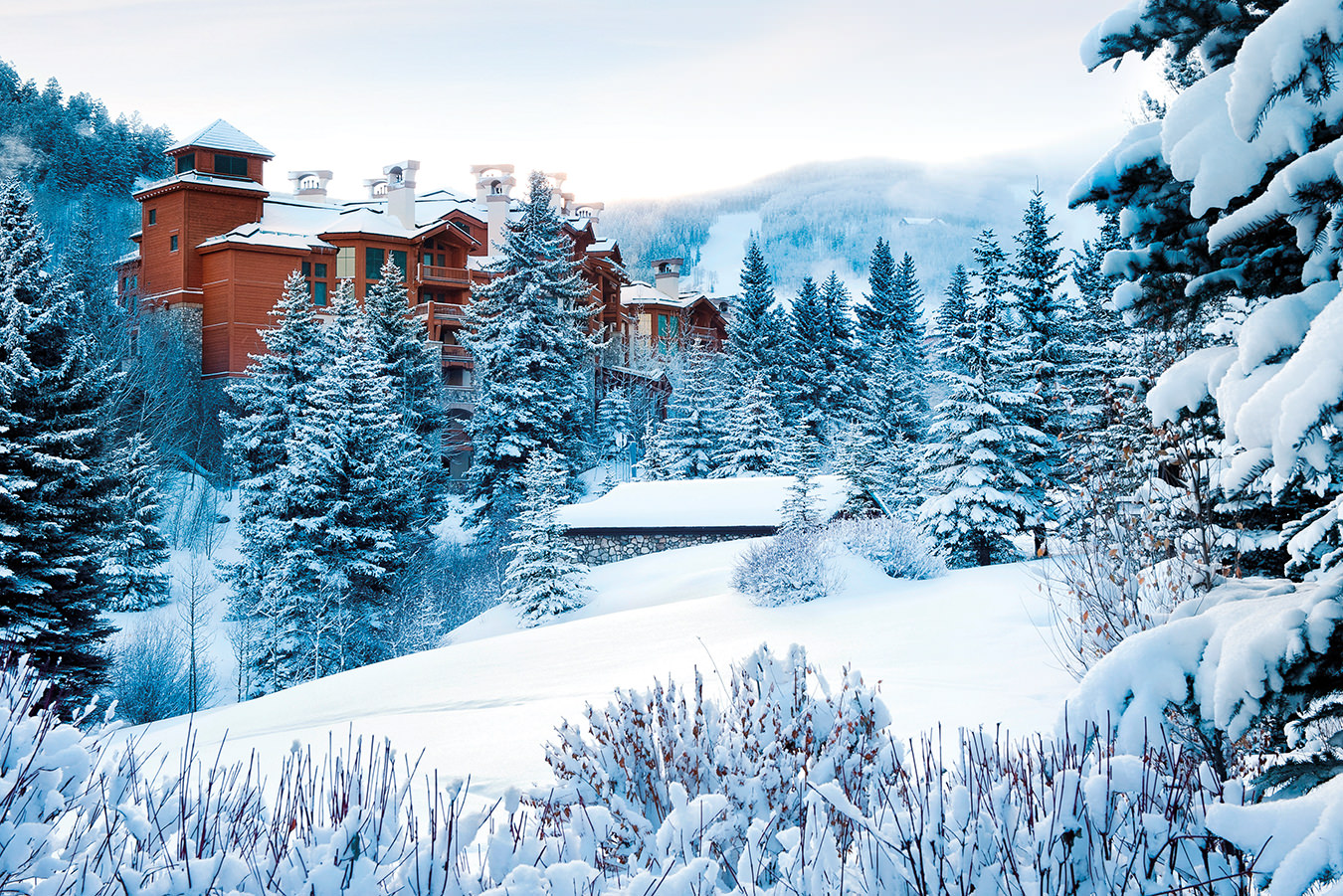The Ice Canoes Of Carnaval
Gentlemen, start your canoes.
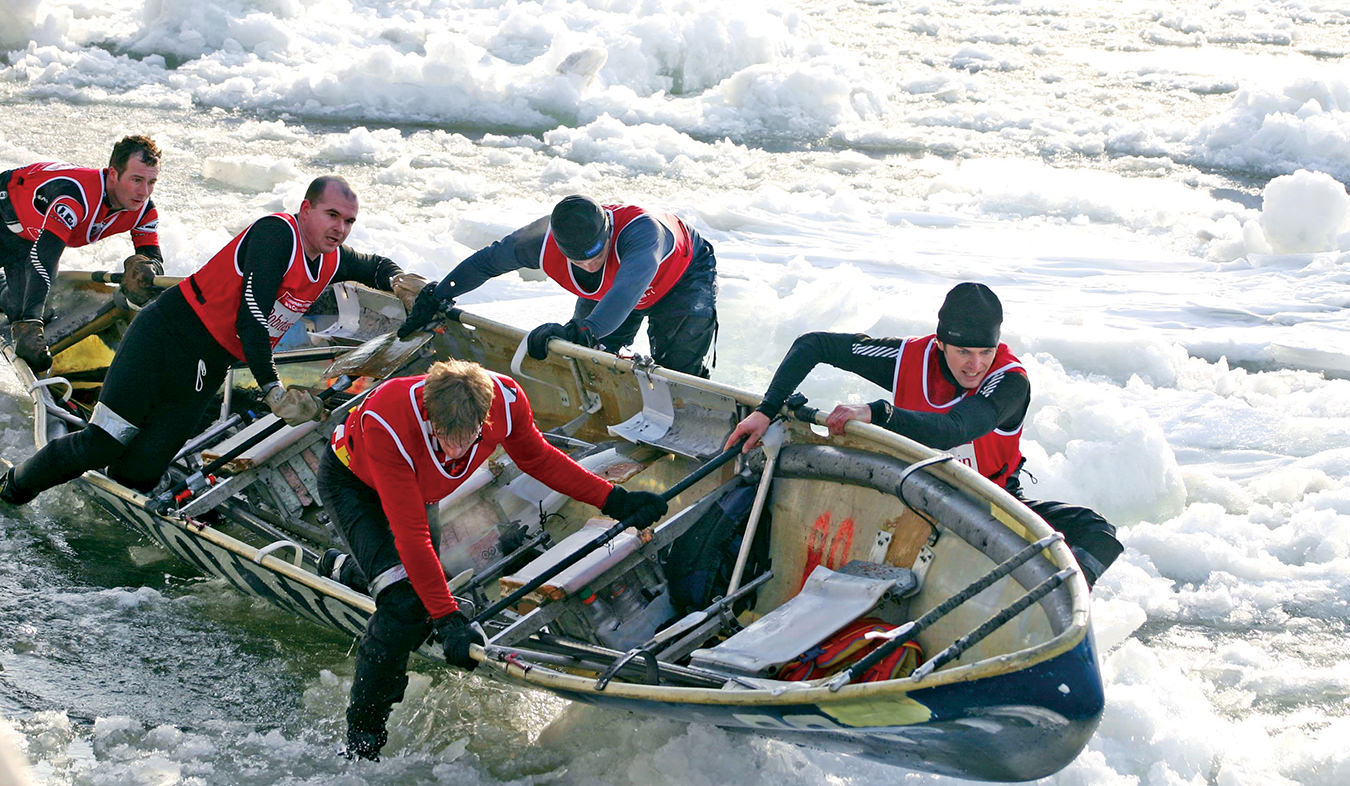
The announcer’s voice booms across the frozen harbour. “The fiftieth annual ice canoe race of the Carnaval de Québec will start en trois minutes!” My husband and I break into a run, past the start line where dozens of vessels are lined up, big as dragon boats, waiting for the horn. We trot down the length of the harbour, past the cement kiln and the tanker ship, the tugboats and fishing boats, hoping to wedge our way into the crowd, which is crammed against the railings along Bassin Louise in Québec City’s old port.
A few lucky souls came early enough to snag valuable real estate on benches and statues, even a scraggly maple tree. One enterprising couple teeters on top of a wobbly garbage can. We should have hiked up to Château Frontenac, I think, eyeing the spectators lined between the cannons on the terrace overhead. There’s nothing in front of me except a forest of digital cameras held up to capture the start. The horn blasts at exactly 1:30 p.m. and thunder rips through the harbour as a fleet of 250-pound fibreglass hulls scrape over a boulder field of ice. The crowd explodes, louder than a Stanley Cup playoff game with their foghorns and noise makers.
Some of the spectators break away from the railing. Apparently the boats have left the harbour and have entered the St. Lawrence River. “Come on!” Rob grabs my hand and we stumble over snowbanks, running with the crowd like a herd of caribou.
Ice canoeing was a colonial form of transport used to cross the St. Lawrence River when the ice wasn’t frozen into a solid bridge. More than two hundred ice runners hauled heavy wooden shuttles to carry food, medicine, and mail across the river between Québec City and Lévis. These canots á glaces were eventually replaced by steel ships built to withstand the ice. The tradition was revived as a sport in 1931 when Château Frontenac sponsored a race between the cities of Québec and Lévis. Today, the sport is kept alive by a small league in southern Québec that holds four races during the winter. The most famous race is le canot de Québec, which draws over 50,000 spectators at the Quebec Winter Carnival.
The Carnaval de Québec is the world’s largest winter carnival and the third biggest carnival after Rio and Mardi Gras. This two-week event begins in the last week of January and draws almost a million people for an annual celebration of winter and Québecois traditions. Old Québec’s streets are extra festive this time of year, roped off for soapbox derbies and dogsled races, bursting with night parades and the sound of trumpets carried by carnival-goers in imitation of Carnaval’s jolly mascot, the snowman Bonhomme.
The heartbeat of the carnival is the winter amusement park on the Plains of Abraham, the fateful battlefield where the English defeated the French in 1759 and Québec became a province of Canada. Today, thousands of people gather here for snowrafting, tubing and sledding, ice fishing, horse-drawn sleigh rides, and a gallery of enormous snow sculptures.
But, by far, it’s the ice canoe race that is the most thrilling event of Carnaval.
A hundred metres down from Bassin Louise, we find a spot on the seawall where the crowd is thin enough to see overhead. The men’s canoes lumber into view. Sponsored by local businesses, the colourful boats are powered by teams of five. Wearing little other than long-sleeved T-shirts, neoprene leggings, and fitted life vests, the crews kneel on the gunnel with their inside legs and swing their outside legs in unison to lunge, lunge, lunge the boats forward, clawing at the ice with their crampons.
Though the sport has been modernized with high-tech equipment, you can’t help but imagine life in the port during the sixteenth century. I’m in this frame of mind because we’re staying in Auberge Saint-Antoine, a boutique hotel in a restored warehouse just behind us on one of the original wharfs in the port. Considered one of the finest hotels in the city, the Auberge is famous for its historic artifacts, recovered when the sight was restored.
It’s fun to ponder the archeological jigsaw puzzles of reconstructed glass bottles and china and the metal instruments worn down to their molecular grain, all displayed in colourful light-boxes throughout the Auberge’s contemporary décor. Our room is named the “Chambre des Dominos” after two scuffed dominos mounted by the door, which have browned over the centuries to the colour of toasted marshmallows.
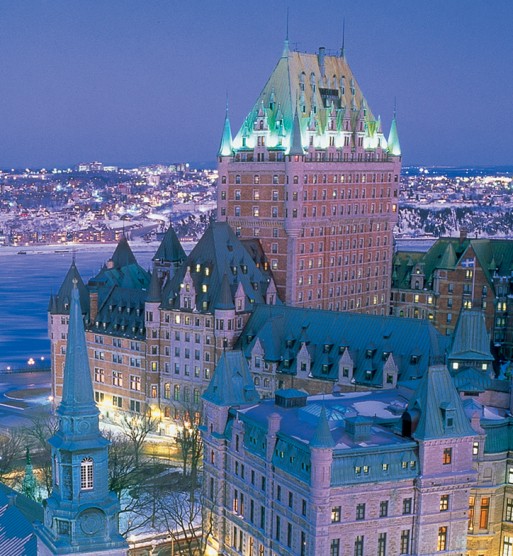
The Château Frontenac in Old Québec. Photo: J.F Bergeron, Enviro Foto. Courtesy of Quebec City Tourism.
I stare at the ice. It sucks me in like a campfire, the sound of countless crystals crackling like flames on wood. I’ve never seen anything like it, this kaleidoscope of white.
The announcer, who’s been talking nonstop since the start of the race, introduces the women’s team now on the course. This is the eighth year there has been a separate competitive class for the women. A record nine teams are competing this year. The crowd cheers as the women skillfully manoeuver the boats, working with the tide that pushes the river back on itself towards Montréal. “This is extremely difficult for the women, with their musculature inférieure!” The announcer yells at top volume, making me grit my teeth.
Across the river against the banks of Lévis, the men begin to fight their way upstream. It’s almost painful to watch them move one length forward, half a length back. Back on this side of the channel, the recreation league struggles down the course. The sport is open to anyone brave enough to try it. The group is clearly at the mercy of the river. One boat launches over a wedge of ice, catapulting the bow straight up and leaving the front crew dangling in mid-air. Another team churns uselessly in a patch of thigh-deep slush.
We cheer encouragement until the river sweeps them away. Now that all the boats have passed, locals peer through binoculars to follow their favourite teams. I stare at the ice. It sucks me in like a campfire, the sound of countless crystals crackling like flames on wood. I’ve never seen anything like it, this kaleidoscope of white. Smooth flat slabs flash like broken mirrors in the afternoon sun. Glacier-blue formations nudge against dirty grey chunks. I sway and lose my balance. If it weren’t for the railing I’d fall right in.
“I don’t know if it’s the ice or that shot of caribou I had on my way down here, but something’s making me dizzy.” Lily, an English nanny wearing a fur cap over red hair, laughs and presses her mittens to her temples. Caribou is the official cocktail of Carnival, a potent mix of port, sherry, vodka, and brandy—depending who’s mixing—served around the clock in street bars throughout the city. “I do like to get sauced but it was even too much for me,” Lily said. “I poured it—discretely of course—into a potted tree.” I could use a swig myself. Cold seeps into my toes from standing still for an hour. I shiver, eyeing the quilted booties on a neighbouring poodle. Still, it’s impossible to dwell on my icy toes knowing the racers might be getting frostbite out on the numbing water. So I think about food instead.
Perhaps we’d go back to the little bakery we found on our first day. A cookshop owner helped us find it when I asked if there were any boulangeries in the area.
She squinted at me over her reading glasses. “You’re searching for bread? Around here, non.” I’d forgotten that french has two words for bakery, boulangerie for bread-baking and patisserie for dessert-making. I tried again. “Ah oui, for les desserts you must go to Le Petit Cochon Dingue.” She kissed her fingertips. “The best tarte au sucre in Québec.”
We found it after a ten-minute stroll over cobblestones in North America’s oldest commercial district, Quartier Petit-Champlain, admiring the ice sculptures in front of the boutiques. The Silly Little Pig, as the name almost translates, has a little red door with a rolling pin for a handle.
I was admiring the case marked les desserts cochons when a tall brunette in a red felt coat pointed at a hazelnut chocolate mousse cake. “Get that one,” she said in English. “I do every year for my husband’s birthday.” Tempting as it was, I did as Madame Kitchen Shop suggested and ordered the local specialty. True to its name, the tarte au sucre was sweet as a sugar cube, definitely rich enough to insulate sixteenth-century dock workers—or ice canoers—against the cold.
The men’s teams are now on the home stretch back to Bassin Louise. “Look!” someone shouts, pointing across the ice. One boat has reached a patch of open water in the wake of the ferry, large enough to lock in their oars and row. They cross the pond in five swift strokes, stow the bows inside the canoe and jump out to continue the work of hauling the boat on foot.
We walk back to the harbour. After an hour and five minutes on the course, the first men’s team swings their boat into the Bassin. The crowd cheers madly as the crew glides their canoe over the ice, smooth as a skating rink here in the sheltered harbour, towards the checkered flag and camera crews at the finish line.
This year, only half of the forty teams finish the race, the last team staggering in after three and a half hours. We can’t wait for them, though. Back in the Chambre des Dominos, there’s a swimming-pool-sized tub I’m dying to sink into.

